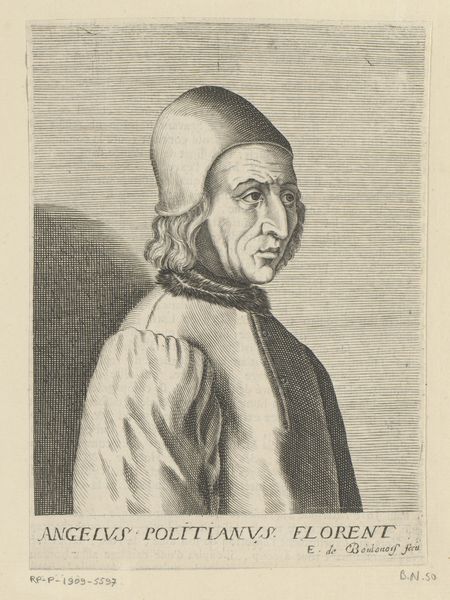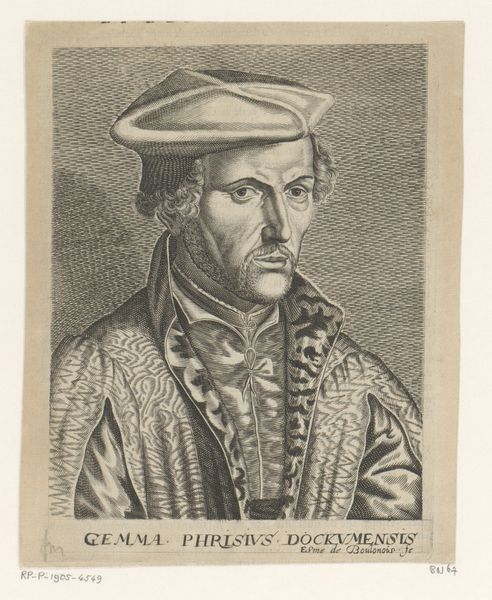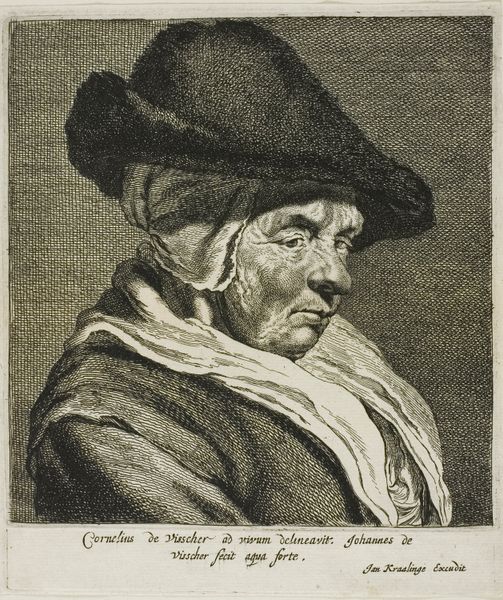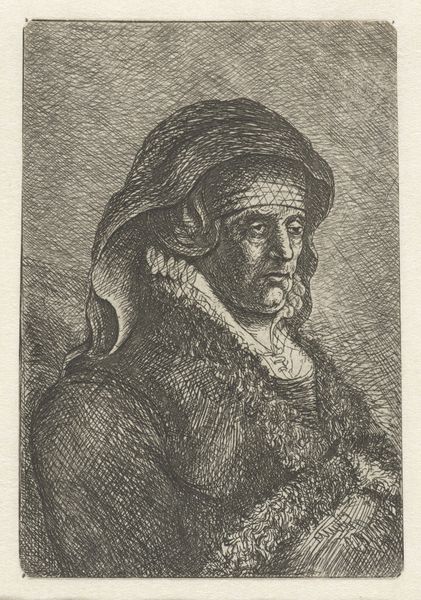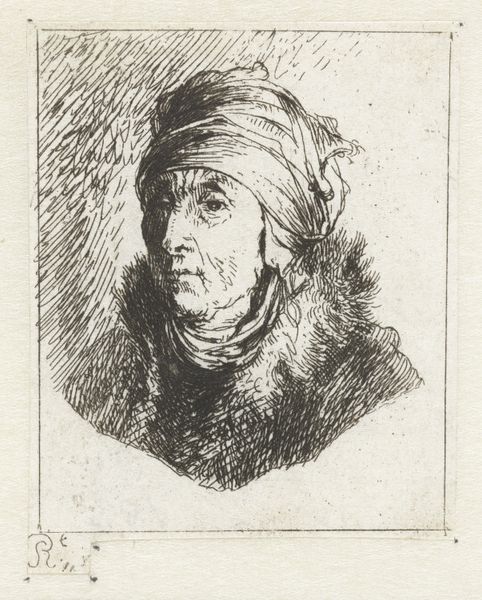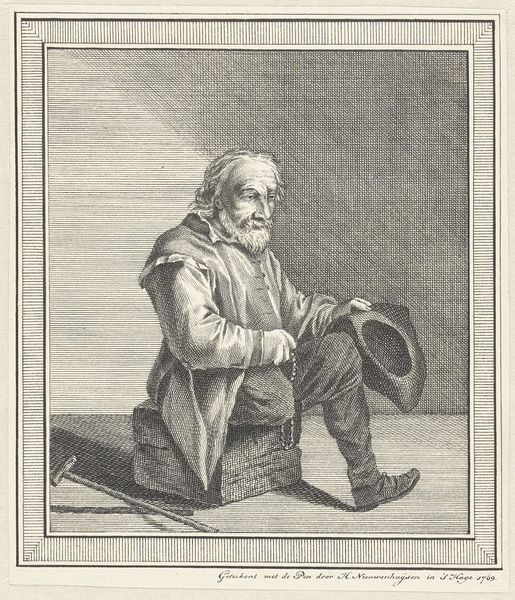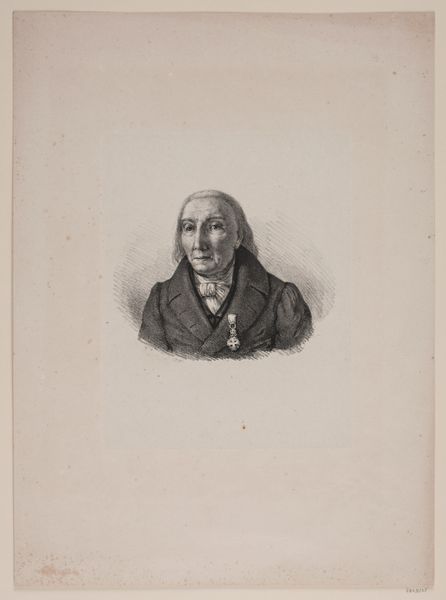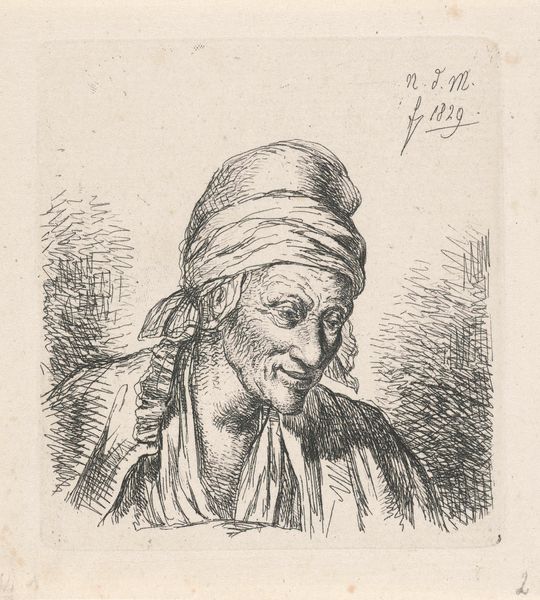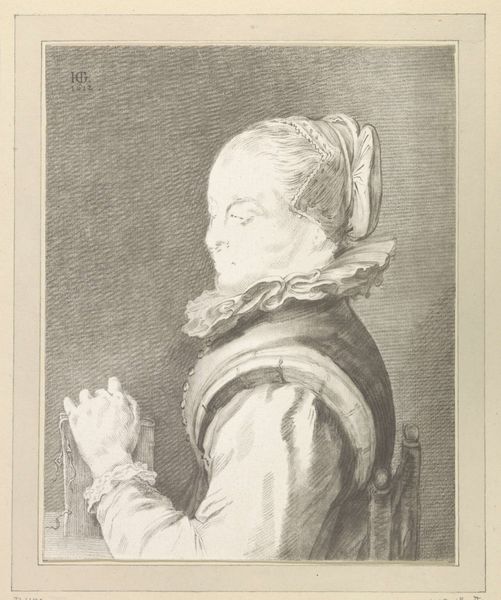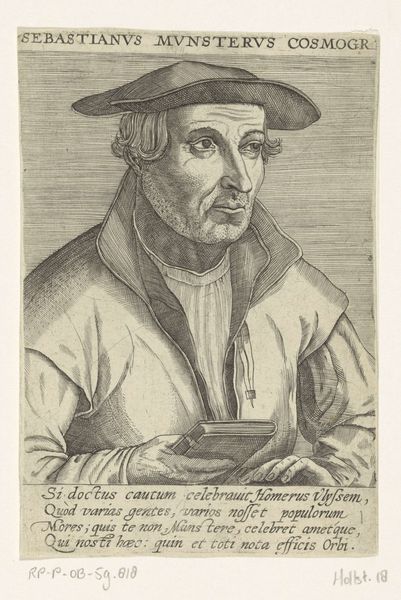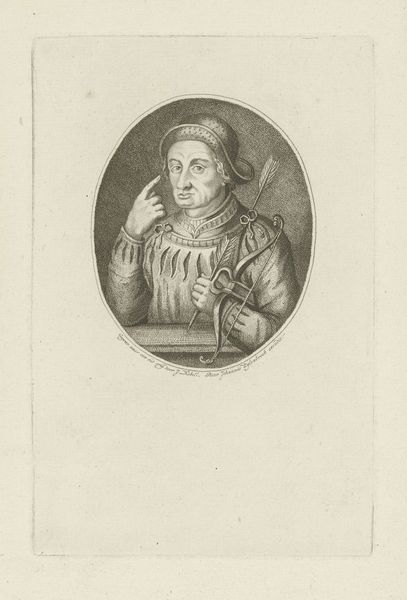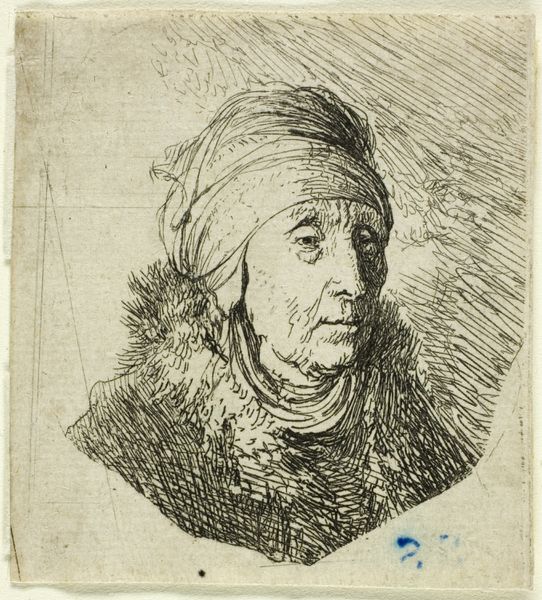
engraving
#
portrait
#
baroque
#
old engraving style
#
portrait drawing
#
history-painting
#
engraving
Dimensions: height 184 mm, width 136 mm
Copyright: Rijks Museum: Open Domain
Curator: The work before us is an engraving from 1682 by Edme de Boulonois, titled "Portret van Jheronimus Bosch," or Portrait of Jheronimus Bosch. It's currently held here at the Rijksmuseum. Editor: There’s a remarkable directness to it. The cross-hatching feels meticulous, creating a sense of quiet observation, but is it also somber, given the somewhat aged depiction? Curator: Boulonois created this piece almost a century after Bosch’s death. Engravings like these were often commissioned to disseminate images, essentially branding artists and shaping their historical reception. The details of production really interest me. Think of the work involved, the transfer of an image through graphic means. Editor: Exactly. We see how institutions and patrons used prints to create and perpetuate artistic legacies. Bosch's inclusion in a portrait series elevates his status within art history and, by extension, reinforces the engraver's cultural role. The formal qualities also contribute; it looks to be a take on a baroque portrait style. Curator: Absolutely, baroque influences are evident. Beyond style, the physicality of the engraving process—the labor, the specific tools used to cut into the metal—that’s something to consider. What inks were available, the type of paper stock utilized; this reveals the specific culture surrounding art production at this time. The text too -- note 'Hieronymo Bochio Pictori'. This clearly marks this man, both in name and profession. Editor: It speaks volumes about the growing awareness of artistic identity and the professionalization of art. We have to consider how the image was intended to circulate. Was it for art collectors? Academics? How does it contribute to the mythology surrounding Bosch, particularly in an era rediscovering earlier masters? Curator: And thinking about consumption, how readily available were such images? Whose walls did this adorn? This brings us closer to an understanding of art’s position within broader social structures of the late 17th century. Editor: Examining this portrait highlights the intertwined histories of art-making, market forces, and historical narrative. It gives us a small but detailed picture into the forces that shaped, and continue to shape, an artist’s lasting reputation. Curator: A vital reminder of the human labour that enables enduring fame. Editor: Precisely, and it underscores art history's inherent reliance on those networks.
Comments
No comments
Be the first to comment and join the conversation on the ultimate creative platform.

